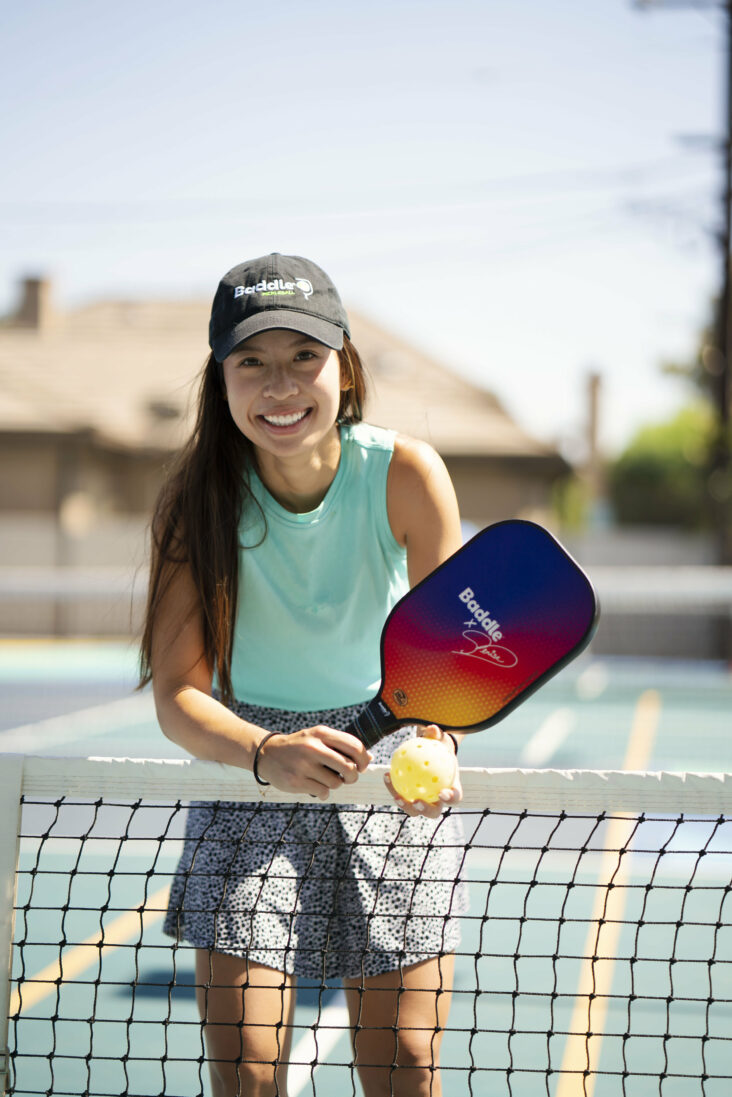Welcome to this insightful article where we delve into the world of two exciting racquet sports – tennis and pickleball.
As a seasoned professional in both disciplines, I am here to shed light on the similarities and differences between these two games, particularly when it comes to the crucial aspect of volleys. Join me as we explore the intricacies of volleying in tennis and pickleball, and how the unique rules of each sport shape the way players approach this fundamental skill.
The Art of the Volley: A Shared Skill
When it comes to volleys, both tennis and pickleball require players to master a similar set of skills and movements. In both sports, the volley involves tilting the paddle or racquet at an angle facing forward, accompanied by a controlled and minimal swing motion. This similarity in technique is one of the reasons why individuals with a tennis background find it relatively easier to transition into pickleball.
The transferability of volley skills between these two sports is a testament to the underlying principles that govern racquet sports. The ability to make precise contact with the ball, maintain proper positioning, and execute a well-timed volley is a valuable asset in both tennis and pickleball. Whether you’re at the net in a tennis match or engaged in a fast-paced pickleball rally, the volley remains a critical component of success in both sports.
Game Rules: Shaping the Volleying Landscape
While the skills required for volleys may be similar, the contrasting rules of tennis and pickleball greatly influence the way players approach this aspect of the game. One notable distinction lies in the existence of the no-volley zone in pickleball, a feature absent in tennis. This rule dictates that players are not allowed to volley when they are too close to the net in pickleball, whereas tennis players have the freedom to play aggressively in front of the net.
The presence of the no-volley zone in pickleball introduces a strategic element known as “dinking.” Dinking refers to the delicate and precise placement of shots over the net, just beyond the reach of the opposing player. This technique is employed to maneuver around the restrictions of the no-volley zone and maintain control of the game. In contrast, tennis players can rely on their ability to move closer to the net and execute volleys with greater power and aggression.
The Importance of Dinking in Pickleball
In pickleball, dinking plays a significant role in gameplay, setting it apart from tennis. While tennis players may rarely engage in dinking, as they have the freedom to move closer to the net and volley, pickleball players, even those with a tennis background, must dedicate time to practicing this particular skill. The nature of pickleball, with its no-volley zone, necessitates the use of dinking as a strategic tool.
Dinking requires finesse, precision, and strategic thinking. Players must delicately place the ball over the net, avoiding the opponent’s reach while maintaining control and dictating the pace of the game. It is a skill that demands practice and mastery, as it frequently arises in pickleball matches. For those transitioning from tennis to pickleball, honing their dinking abilities becomes essential to adapt to the unique dynamics of the game.
Frequently Asked Questions
Q: Can tennis skills be easily transferred to pickleball?
Yes, tennis skills are generally transferrable to pickleball, including the volley. The similar technique and movement involved in volleys make it relatively easier for individuals with a tennis background to excel in pickleball.
Q: How do the game rules differ between tennis and pickleball?
One significant difference lies in the presence of the no-volley zone in pickleball, which restricts players from volleying when they are too close to the net. In tennis, players have the freedom to aggressively volley in front of the net.
Q: What is dinking, and why is it important in pickleball?
Dinking refers to the delicate placement of shots over the net in pickleball. It is a strategic technique used to navigate around the no-volley zone and maintain control of the game. Unlike tennis, dinking is a crucial skill in pickleball.
Q: Do tennis players frequently engage in dinking?
No, tennis players rarely employ dinking as they have the freedom to move closer to the net and execute volleys with power and aggression.
Q: Is dinking a skill that pickleball players with a tennis background need to practice?
Yes, players transitioning from tennis to pickleball must dedicate time to practice dinking. The no-volley zone in pickleball necessitates the use of dinking as a strategic tool.
In conclusion, while tennis and pickleball share similarities in volleying skills, the contrasting rules of each sport significantly impact the way players approach this aspect of the game.
The importance of dinking in pickleball, driven by the presence of the no-volley zone, sets it apart from tennis and requires players to develop finesse and precision in their shots. As you embark on your journey in these two captivating racquet sports, remember to adapt your skills and strategies accordingly, embracing the unique dynamics of each game.
Remember, whether you’re a tennis enthusiast exploring the world of pickleball or a pickleball player looking to enhance your skills, understanding the distinctions between these sports will undoubtedly elevate your performance on the court. So grab your paddle or racquet, step onto the court, and embrace the thrill of volleying in tennis and pickleball!




One Comment